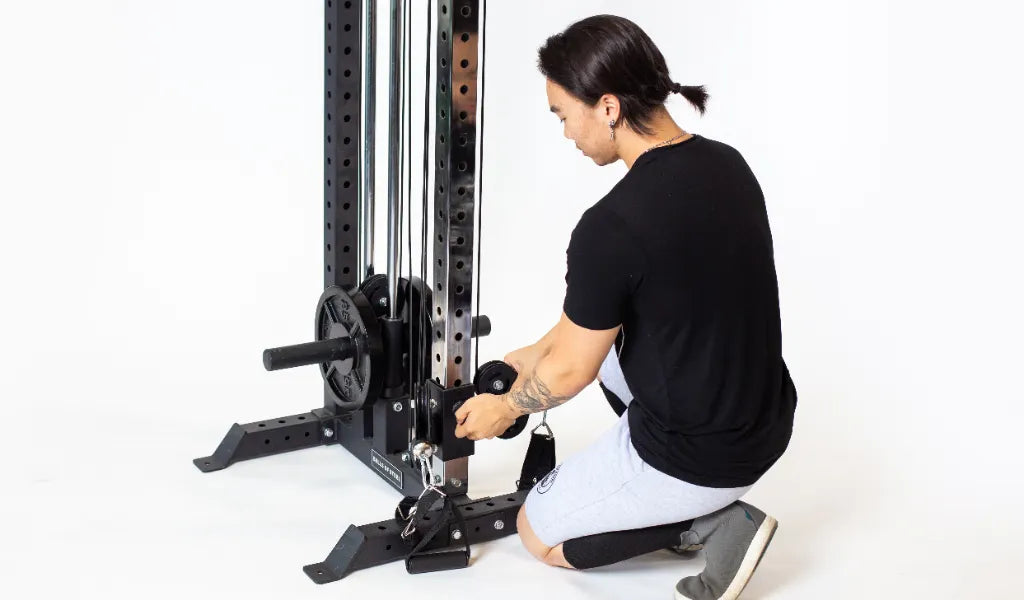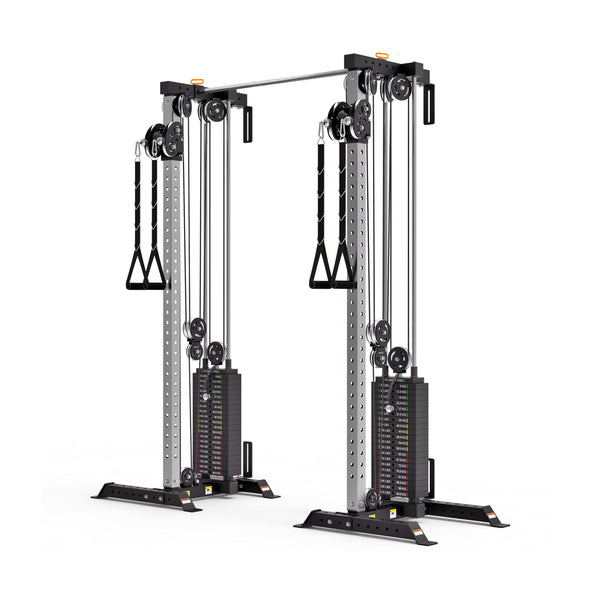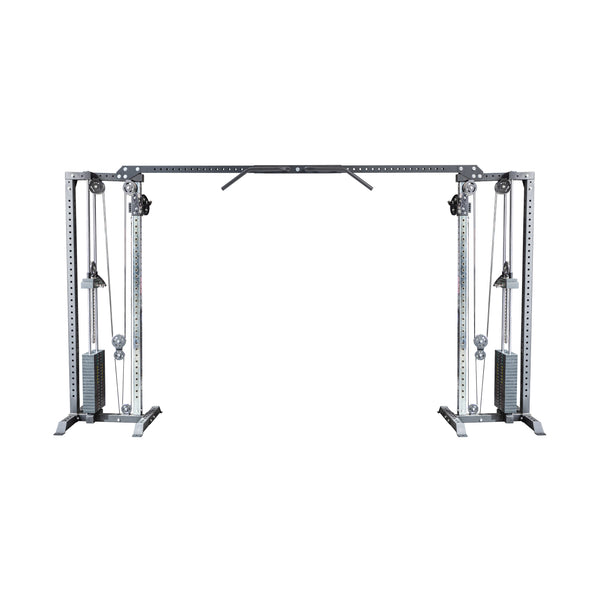So, you've decided to transform your humble abode into a personal fitness sanctuary? Kudos! Whether you're new to the home gym scene or a seasoned lifter, the cable deadlift is a stellar addition to your workout arsenal. In this article, we'll walk you through the what, why, and how of cable deadlifts. Let’s get into it!
Let's break it down to the basics, folks. The cable deadlift is a resistance exercise that primarily targets your posterior chain, including the glutes, hamstrings, and lower back. Picture this: you're standing in front of a cable machine, holding a handle attached to a low pulley, and ready to unleash the gains. It's a variation of the traditional barbell deadlift, but it adds a unique twist (literally) to your workout routine.
Muscles at Play
Before we get into the nitty-gritty of how to perform a cable deadlift, let's talk about the muscles this bad boy works. Here's a quick rundown:- Glutes: These buns of steel are your powerhouse in the cable deadlift. They fire up to lift the weight and give you that well-defined booty.
- Hamstrings: Your hamstrings at the back of your thighs get a healthy dose of action, making sure you can bend and straighten those legs without a hitch.
- Lower Back: The lower back muscles, particularly the erector spinae, keep your spine in check during the lift.
- Core: A strong core is your secret weapon in stabilizing your body throughout the movement.
How to Perform the Cable Deadlift
Alright, now it's time to get down to business. Follow these steps to perform the cable deadlift like a champ:Step 1: Set Up
- Attach a straight or V-shaped handle to the low pulley of your cable machine.
- Stand with your feet hip-width apart, toes pointing forward.
- Place the handle about a foot in front of you.
Step 2: Grip and Stance
- Bend at your hips and knees to reach down and grab the handle with both hands.
- Your grip should be overhand (palms facing you), arms fully extended, and hands shoulder-width apart.
- Maintain a neutral spine, keeping your chest up and shoulders back.
Step 3: The Lift
- With the handle in your grasp, stand up by extending your hips and knees simultaneously.
- Keep the cable close to your body throughout the movement.
- Fully extend your hips and stand tall. At this point, you're basically a deadlift superstar.
- Reverse the movement by bending at your hips and knees, lowering the handle back to the starting position.
Step 4: Repeat and Perfect
- Perform 3-4 sets of 8-12 reps. You know the drill, lift, lower, and repeat.
- Maintain proper form throughout the exercise – no cheating allowed!
Q1: Do I Need a Cable Machine for Cable Deadlifts?
Yep, you got it! You'll need a cable machine with a low pulley to perform this exercise. It's the magic ingredient that makes cable deadlifts possible. We recommend our Plate Loaded or Stack Loaded Standalone Cable Tower (wow, that’s a mouthful). It’s smooth, functional, and versatile with a small, home gym-friendly footprint.Q2: Is Cable Deadlift Better Than Barbell Deadlift?
It's not a matter of "better" or "worse," but rather a matter of variety. Cable deadlifts provide a different feel and work your muscles in a unique way compared to barbell deadlifts. It's like choosing between apples and oranges – both are delicious, just different.Q3: Can I Use Cable Deadlifts for Fat Loss?
Absolutely! Cable deadlifts are a fantastic compound exercise that torches calories and builds lean muscle. They can be a valuable part of your fat loss journey.Safety First
Before you embark on your cable deadlift adventure, here are a couple of safety tips to keep in mind:- Start with a light weight to practice your form.
- Always warm up before lifting any significant weight.
- If you're new to deadlifts, consider having a fitness buddy or a personal trainer to guide you.
Cable Exercises:
Cable Pull-Through:
- Attach a rope or straight bar to the low pulley.
- Stand facing away from the machine with your feet shoulder-width apart.
- Hinge at your hips, keeping your back straight and chest up, and pull the rope/bar through your legs, then thrust your hips forward to stand up.
- This exercise targets the glutes and hamstrings similarly to the cable deadlift.
Cable Romanian Deadlift:
- Attach a straight or V-shaped bar to the low pulley.
- Stand facing the cable machine with your feet hip-width apart.
- Hold the bar with an overhand grip (palms facing you) and arms fully extended.
- Hinge at your hips while maintaining a straight back to lower the bar toward the ground.
- Stand up by extending your hips.
- This variation puts more emphasis on the hamstrings and lower back.
Free Weight Exercises:
Barbell Deadlift:
The classic barbell deadlift is a fantastic alternative to the cable deadlift.- Load a barbell with your desired weight and stand with your feet hip-width apart.
- Bend at your hips and knees to grip the bar with both hands.
- Lift the barbell by extending your hips and knees.
- Lower it back to the ground with control.
- It works the same muscle groups as the cable deadlift, including the glutes, hamstrings, and lower back.
Dumbbell Deadlift:
For those who prefer dumbbells, the dumbbell deadlift is a viable choice.- Hold a dumbbell in each hand, by your sides, with a neutral grip (palms facing your body).
- Bend at your hips and knees and perform the deadlift in the same manner as with a barbell.
- This exercise also targets the same muscle groups but allows for a different range of motion and grip variation.
Kettlebell Swing:
While not a deadlift per se, the kettlebell swing is a dynamic exercise that engages the posterior chain.- Stand with your feet slightly wider than shoulder-width apart, holding a kettlebell with both hands.
- Hinge at your hips, swing the kettlebell back between your legs, and then forcefully thrust your hips forward to swing the kettlebell to chest level.
- The kettlebell swing primarily targets the glutes and hamstrings while also involving your core and lower back.
Sumo Deadlift:
Similar to the traditional deadlift, the sumo deadlift involves a wider stance and a barbell placed between your legs.- Take a wide stance with your toes pointing slightly outward.
- Grip the barbell with your hands inside your legs.
- Lift the barbell by extending your hips and knees.
- The sumo deadlift emphasizes the inner thighs, quads, and lower back.
These alternatives provide variety and can help prevent workout plateaus. Choose the one that suits your goals and equipment availability, and incorporate them into your training regimen to keep your workouts fresh and challenging. The cable deadlift is a versatile exercise that can take your home gym gains to the next level. It targets the glutes, hamstrings, lower back, and core – a real bang for your buck!
Remember to maintain proper form, start with a manageable weight, and gradually increase the challenge as you get stronger. So go ahead, give the cable deadlift a shot, and watch those gains stack up!



